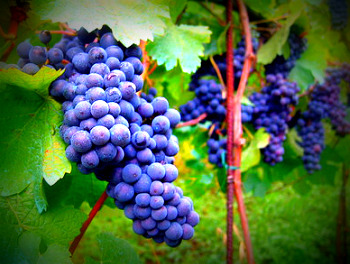 I love Italian wine – okay, I like all kinds of wine – but I’m so far from being an expert on what I’m drinking that I don’t even bother trying to fake it. Which is why I asked blogging pal Robbin Gheesling, who’s studying for a Diploma in Wines and Spirits and aspires to be a Master of Wine, to help me out.
I love Italian wine – okay, I like all kinds of wine – but I’m so far from being an expert on what I’m drinking that I don’t even bother trying to fake it. Which is why I asked blogging pal Robbin Gheesling, who’s studying for a Diploma in Wines and Spirits and aspires to be a Master of Wine, to help me out.
I wanted Robbin to give me the low-down on how to read an Italian wine label, and in the end she gave me that – and so much more. The terminology can be confusing, but I think this article will help you out if you’re hoping to buy (or at least try) some wines in Italy.
And remember – you can print out this article and take it with you using the “Print this article” link at the bottom!
So you’ve read the guidebooks, you’ve asked around. You are now standing at the door to the best enoteca and are ready to make a purchase to take home. But just because you like to drink wine doesn’t mean you understand what all the wine vocabulary means – especially when it’s not in your native language.
Facing a wall of beautiful bottles hiding behind impossible-to-decipher Italian wine labels can be daunting. Here is a basic guide of what those Italian wine labels are trying to tell you, and what you should look for when you’re ready to buy.
Italy follows what’s called a “classification system.” All this really means is that there are laws in place regulating the following:
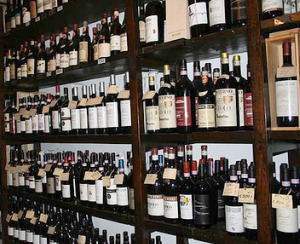 When a wine producer meets the legal requirements outlined in a classification, the wine qualifies for a certain designation, otherwise known as a denomination, or in Italian: denominazione.
When a wine producer meets the legal requirements outlined in a classification, the wine qualifies for a certain designation, otherwise known as a denomination, or in Italian: denominazione.
These denominazioni are where things can start to get tricky for wine buyers.
Italy is considered a producer of “Old World” wines. For “Old World” wines, the designations are usually the name of the place where the wine is made (sometimes known as an “appellation”). For example: Barolo DOCG wine is made from the nebbiolo grape in the region of Barolo in Piedmont. The region, not the grape, is what’s highlighted on the label. “New World” wines like those produced in California and Australia also have a classification system, but usually have looser regulations as to what can appear on the label – so you might see the kind of grape instead of or in addition to the name of a place.
When it comes to places and grapes, then, a little research and memorization comes in handy. But what tasty research!
Italy’s classification system is broken down into four levels, starting with the most strict:
These are other words that might appear on an Italian wine label, and what they indicate:
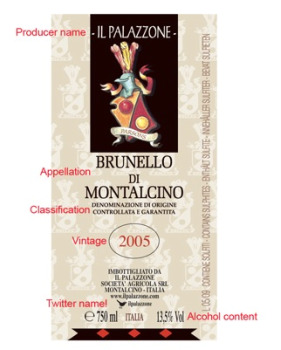
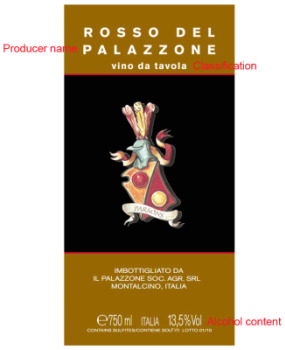
As you can see from these Il Palazzone wine labels, the information is generally the same, it just might be in different places. Although it may be awhile before you see a Twitter name on most Italian wine labels – the left label is clearly ahead of its time!
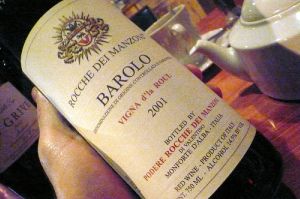 How do all of those acronyms defined above help you buy a wine while traveling? If you come to Italy with something in mind to buy, it can help a lot. If you’re simply exploring, they mean very little.
How do all of those acronyms defined above help you buy a wine while traveling? If you come to Italy with something in mind to buy, it can help a lot. If you’re simply exploring, they mean very little.
In other words, if you absolutely love every Chianti Classico DOCG you’ve ever had, you’re a fan of wines made from the sangiovese grape. Knowing which DOCGs and DOCs use a majority of sangiovese will make your selection process much simpler.
If you’re up for experimentation, the reputation of the producer can be more important than the classification. When a good winemaker chooses to play, they tend to play outside of the regulation and those wines tend to fall under the IGT or VdT category. A lower classification does not automatically mean a lower quality wine.
With all of these restrictions, logic says the DOCG wines are the most expensive because they are the most restrictive. That’s not always the case. When shopping, you can’t automatically assume that every vino da tavola will be inexpensive. The term “super Tuscan” came about in the 1970s when those good winemakers started making excellent wines outside of the regulation. These wines were vino da tavola and yet were not bargain wines. Like wine itself, value for the price can be a personal decision. If it’s only 2€ a gallon but you don’t like it, is that a good deal? If it’s 50€ a bottle but you love it, is that a bad deal?
So, what is the best strategy for exploring wine to buy in Italy? Start at home! It’s always great to have a relationship with a good wine shop, be it for Tuesday night’s dinner or your next trip to Italy. The questions to ask the shop should start with what you usually buy. Maybe you want to find something similar – or completely different – either way, they should be able to help. Ask if they know of any great producers that are not imported in your area, or what your favorite producer might be making in small quantities that might only be available at the cellar door.
With a little pre-planning, the bottles you bring home from your Italian holiday will have richer story attached to them. When you share those special wines with family and friends you will have a better appreciation of the journey you took to get those bottles.

annotated wine labels provided by Robbin Gheesling; other photos, top to bottom, by: rdesai (edited in Picnik by me), Rachel Black, atl10trader